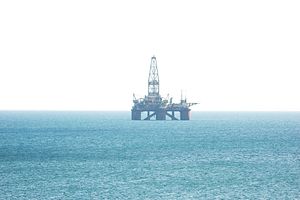On June 15, Emirates National Oil Company (ENOC) offered to buy out the minority stakeholders in Dubai-based Dragon Oil for £7.5 ($11.81) per share, a proposition that was rejected days later by the largest minority investor in the company, Baillie Gifford. A shareholder fight ensued, stalling the deal.
ENOC already owns 53.9 percent of Dragon Oil, which has its principal operations in Turkmenistan. The company focuses on the Cheleken Contract Area, which comprises two oil and gas fields just off the coast of Turkmenistan, in the Caspian Sea. Dragon Oil signed a Production Sharing Agreement with the government of Turkmenistan in 1999 which granted the company a 25-year license on the field. The year before, ENOC had purchased 46 percent of the company, which originated from Ireland. Now it is aiming for total control of Dragon Oil.
U.K.-based Baillie Gifford, which owns 7.2 percent of Dragon Oil and was listed as the only other “significant shareholder” in the company’s 2014 report (that is, holding at least 3 percent of voting rights), rejected the June 15 offer, which would have valued the remaining 46 percent of Dragon Oil at the equivalent of $2.7 billion. For Baillie Gifford, the offer “significantly undervalues the potential growth of the company.” While Templeton Asset Management Ltd (holding a 4 percent stake) and Setanta Asset Management Ltd (3 percent) did not voice an opinion on the offer, LGM Investments Ltd (2.4 percent) told the press that the price was fair: “bearing in mind the depressed oil price and uncertainties in the market.” The ultimate goal of ENOC is likely to be achieved, as Baillie Gifford is not in a position to convince the other minority shareholders to keep rejecting offers from Dubai. The company could then de-list from the Dublin and the London Stock Exchanges.
Dragon Oil has ramped up its capital expenditure in the past few years, betting heavily on the success of Cheleken, which has secured the sustainability of the company, hitting a production level of 50,000 barrels of oil per day (bopd) at the end of 2009. In 2014, production had grown to 78,800 bopd; in the first quarter of 2015, it was 88,000 bopd, markedly behind the forecast milestone of 100,000 bpd in 2015. But with a solid balance sheet and with new investments in the Middle East and Africa that have diversified its portfolio, ENOC deems the company a worthy bet.
Export options for the Caspian oil and gas field are limited by the absence of routes, the choices being the old Soviet pipelines through Russia or via tanker to other Caspian ports. Until July 2010, Dragon Oil had a swap deal with Iran that allowed most of its oil to be sold through the brokerage of Iran in the Persian Gulf. The deal was called off when Iran asked for a larger discount, and since then the Baku-Tbilisi-Ceyhan pipeline to Turkey has been used. Still, Dragon Oil’s potential could be used by the government of Turkmenistan as an additional reason to build a trans-Caspian pipeline to send oil and gas across to Azerbaijan and onwards to Europe.
In 2009, after the global financial crisis, ENOC unsuccessfully made its first bid to acquire Dragon Oil outright. Hit by the fall in oil prices of last summer, Dragon Oil cut capital expenditure forecasts for 2015 by 26 percent last January. In March, ENOC made its second offer to buy out minority shareholders, valuing shares at £6.50.
Dubai’s investment in Turkmenistan has been growing. Apart from Dragon Oil, Petrofac Emirates won a $4 billion deal to jointly develop infrastructure at the South Yolotan field in southern Turkmenistan in late 2009. As the purchase of Dragon Oil nears for ENOC, a new wave of Central Asia-bound investments from the Gulf countries looks likely.

































